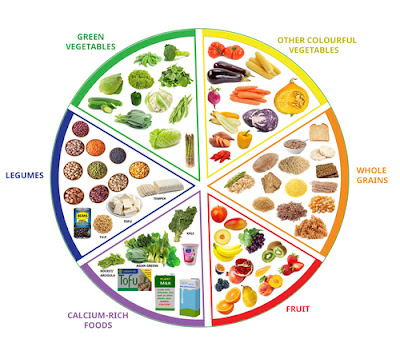Nutrition is the biological and chemical process by which an organism uses food as a medium for the support of its physiological life. It consists of absorption, assimilation, fiction, metabolism, biosynthesis and excretion. It also involves all the processes which determine the quality and nutrients of the food and determine the development of the organisms. Nutrient deficiency results in the death of the organisms and nutrition deficiency causes in developed animals retarded growth and other physical deformities. Nutrition is a science whose exact definition is extremely difficult. It is dependent on the type of organism, its physiological conditions, environment, parasites, diet and its behavior.
The nutritional requirements of an average human being are estimated at about 2 800 calories per day. However there are wide ranges in this requirement making it difficult to say what exactly is healthy for us. The concept of nutrition is generally understood to mean good nutrition or balanced diet. A well-balanced diet is one in which the food you eat contains all the essential nutrients necessary for your body to function normally. Foods that are rich in protein, carbohydrate, fat, vitamins, minerals and fiber contribute to a healthy diet.
Carbohydrates provide energy. Proteins are used to provide the body with the materials necessary for building and repairing muscles. Fats are necessary to provide energy and protect the body from damage. In fact, all the fats can be classified as nutrition because they provide energy and are necessary to live.
The first step in establishing a good nutritional regime is understanding how the food choices affect your nutrition. During your first study session 2 nutrients were presented to you; food that had no calories and food that had some calories. You then had a list of food choices and had to choose the ones that meet your recommended daily allowance of those nutrients. You would need to compare these food choices against your list of required nutrients.
Your second study session taught you how to choose carbohydrates, fat and vitamins. This includes learning about the difference between solid foods like potatoes, rice, bread, vegetables and fruits, and partially digested foods such as beans and foods containing sugar, salt, or sugar substitutes. It also included discussions on the optimum times to eat certain foods. Your nutritionist would guide you with these discussions and help you choose foods that meet your recommended nutrient needs. Again, you would need to check these foods against your list of required nutrients.
Your third study covered the topic of fruit and vegetable food groups. You were introduced to terms like primary food groups and secondary food groups. These food groups are based on what you might eat more of or less of. It also included discussions about how important it is to eat whole grains, how the food groups can be combined, the benefits and limitations of fruits and vegetables and the combination of both.
The fourth and last lesson covered the topic of vitamins, minerals and essential fatty acids (EFAs). It was designed around the concept of nutritional deficits and your role in maintaining healthy nutrient levels. There were several examples include a discussion on low vitamin D, the effects of environmental contaminants on the B vitamins, and the impact of saturated fats on the health of your heart. Your nutritionist will help you make the right decisions regarding your intake of these nutrients.
With this information, you have a good base from which to begin creating nutritious meals and snacks for your loved ones. Remember, your nutritionist is just one of many people who will advise you regarding what and how much of particular nutrients you should include in your daily diet. It is important that you take their advice seriously, but in addition, remember that you are the one who will have to actually put in the effort to make certain that the foods you eat do enough to fulfill your body's needs.
